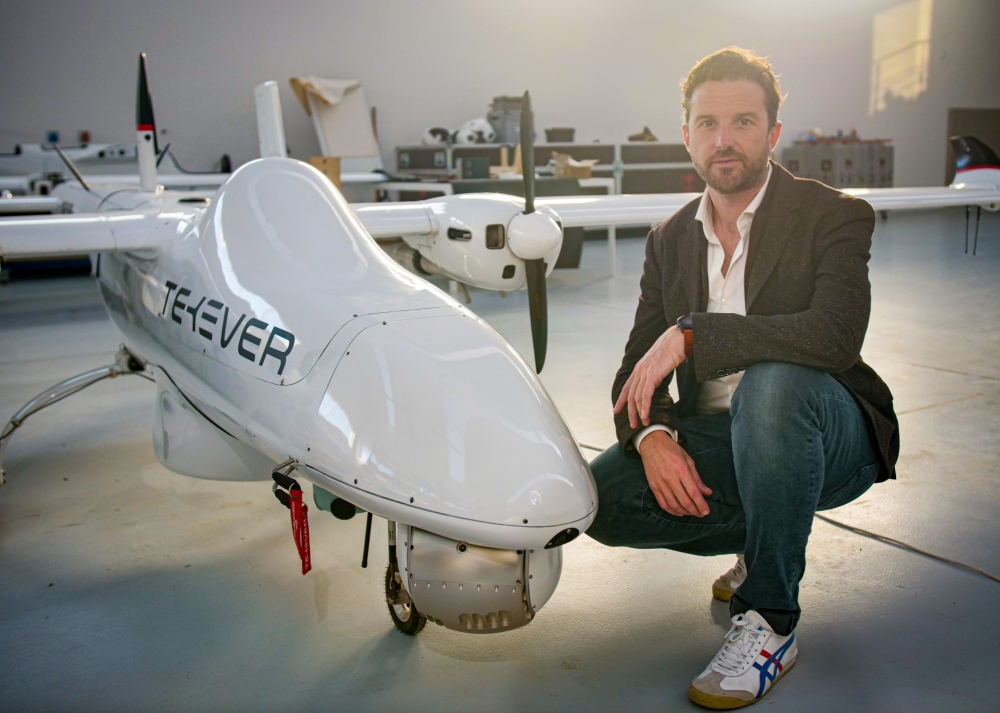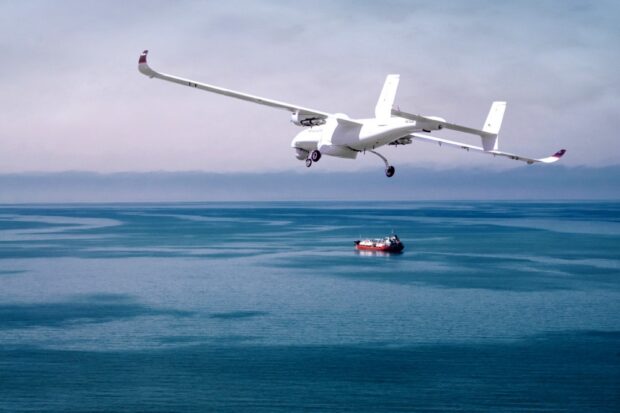Through a contract worth as much as £1 billion ($1.2 billion), Tekever’s drones provide live-streamed video footage that helps law enforcement distinguish between passengers and traffickers. This has, according to the Home Office, led to “dozens of” convictions of smugglers.
Three years on and the Home Office is extending its contract with Tekever, the company’s Chief Executive Officer Ricardo Mendes told Bloomberg. The new agreement expands Tekever’s role to cover more territory and collect richer data using more sensors mounted to the drones. Mendes didn’t disclose the value of the contract.
In July 2020, 36-year-old Iraqi Rebwar Ahmed piloted an inflatable small boat carrying 20 migrants across the English Channel. His vessel was intercepted by the UK’s Border Force. Two months later, Ahmed was sentenced to 31 months in prison after he admitted to a charge of assisting unlawful immigration. One of the most critical pieces of evidence against him — a smoking gun that identified him as the smuggler: drone footage.
Ahmed is among the first migrant smugglers to be prosecuted using high-resolution footage taken by a drone. Since late 2019, unmanned aerial vehicles developed by a Portuguese firm, Tekever Ltd., have been used by the UK government to monitor large stretches of the waterway between England and France in a manner that wasn’t possible before.
Tekever is one of the primary beneficiaries of a government spending spree on Channel monitoring operations at a time when small-boat smugglers are a key political flashpoint. Other countries are also turning to drones to patrol their borders, with the US Customs and Border Protection agency describing them as a “game changer.”
Government investment in drone surveillance is fueling growth in the industry. According to research from Drone Industry Insights, the global drone market is forecast to reach $55.8 billion by 2026. And the sector focused on “safety and security,” which includes border patrol as well as other types of perimeter security and crowd monitoring, is expected to nearly triple this decade, from $1.2 billion in 2021 to $3.2 billion in 2030.

Chief Executive Officer Ricardo Mendes
Tekever’s drones monitor illegal crossings and other illicit activity using a combination of radar, video and infrared imagery. They can fly autonomously, in predetermined patterns, remotely overseen by a pilot who can take control at any point. Once a vessel of interest is detected, the drone will stream real-time, high-resolution footage back to the client — in this case the Home Office — for review.
Dr Neil Honeyman, Chief Technology Officer for the Home Office’s Small Boats Operational Command, described Tekever’s systems as a “cutting-edge” component for tackling “this illegal and extremely dangerous activity in the English Channel.”
The unmanned aerial vehicles have, over three years, documented the passage of 84,000 migrants who crossed the Channel and were registered in the UK, according to the Home Office. The numbers have risen each year despite the additional surveillance. In some cases, the drones were able to identify small boats struggling to stay afloat, allowing the coastguard to intervene and save passengers, Mendes said. Neither Tekever nor the Home Office would say how many people were saved in this way.
Tekever also has a drone that can drop a life raft if needed, but declined to say how often it had been deployed.
Venture capitalist Uwe Horstmann, a general partner at Project A, said the deal highlighted a rising interest in drone companies across Europe.
“Investment in drone companies, particularly with dual use technology for civilian and military or law enforcement purposes, have increased tremendously in light of the war in Ukraine,” Horstmann said in an email. “Governments are under pressure and more willing now to work with younger companies and startups to buy cheaper, off-the-shelf systems.”
But refugee rights advocate Petra Molnar, associate director of the Refugee Law Lab, said that increased border surveillance could drive migrants to take more dangerous routes to avoid detection, “potentially leading to loss of life.”
Source: Bloomberg

